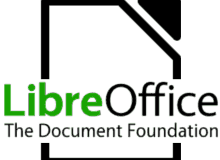ImageMagick(1) General Commands Manual ImageMagick(1)p
NAME
ImageMagick – is a free software suite for the creation, modification
and display of bitmap images.
SYNOPSIS
magick [options|input-file]… output-file magick-script script-file
[script-arguments]…
OVERVIEW
Use ImageMagickr to create, edit, compose, or convert bitmap images. It
can read and write images in a variety of formats (over 200) including
PNG, JPEG, GIF, HEIC, TIFF, DPX, EXR, WebP, Postscript, PDF, and SVG.
Use ImageMagick to resize, flip, mirror, rotate, distort, shear and
transform images, adjust image colors, apply various special effects,
or draw text, lines, polygons, ellipses and B\[‘e]zier curves.
The functionality of ImageMagick is typically utilized from the com-
mand-line or you can use the features from programs written in your
favorite language. Choose from these interfaces: G2F (Ada), MagickCore
(C), MagickWand (C), ChMagick (Ch), ImageMagickObject (COM+), Magick++
(C++), JMagick (Java), JuliaIO (Julia), L-Magick (Lisp), Lua (LuaJIT),
NMagick (Neko/haXe), Magick.NET (.NET), PascalMagick (Pascal), PerlMag-
ick (Perl), MagickWand for PHP (PHP), IMagick (PHP), PythonMagick
(Python), magick (R), RMagick (Ruby), or TclMagick (Tcl/TK). With a
language interface, use ImageMagick to modify or create images dynami-
cally and automagically.
ImageMagick utilizes multiple computational threads to increase perfor-
mance and can read, process, or write mega-, giga-, or tera-pixel image
sizes.
ImageMagick is free software delivered as a ready-to-run binary distri-
bution or as source code that you may use, copy, modify, and distribute
in both open and proprietary applications. It is distributed under a
derived Apache 2.0 license.
The ImageMagick development process ensures a stable API and ABI.
Before each ImageMagick release, we perform a comprehensive security
assessment that includes memory error, thread data race detection, and
continuous fuzzing to help prevent security vulnerabilities.
The current release is ImageMagick 7.0.8-11. It runs on Linux, Windows,
Mac Os X, iOS, Android OS, and others.
The authoritative ImageMagick web site is https://imagemagick.org. The
authoritative source code repository is https://github.com/ImageMagick.
We maintain a source code mirror at https://gitlab.com/ImageMagick.
We continue to maintain the legacy release of ImageMagick, version 6,
at https://legacy.imagemagick.org.
The functionality of ImageMagick is typically utilized from the command
line or you can use the features from programs written in your favorite
programming language. Choose from these interfaces: MagickCore (C),
MagickWand (C), ChMagick (Ch), Magick++ (C++), JMagick (Java), L-Magick
(Lisp), PascalMagick (Pascal), PerlMagick (Perl), MagickWand for PHP
(PHP), PythonMagick (Python), RMagick (Ruby), or TclMagick (Tcl/TK).
With a language interface, use ImageMagick to modify or create images
automagically and dynamically.
ImageMagick includes a number of command-line utilities for manipulat-
ing images. Most of you are probably accustom to editing images one at
a time with a graphical user interface (GUI) with such programs as gimp
or Photoshop. However, a GUI is not always convenient. Suppose you want
to process an image dynamically from a web script or you want to apply
the same operations to many images or repeat a specific operation at
different times to the same or different image. For these types of
operations, the command-line image processing utility is appropriate.
In the paragraphs below, find a short description for each command-line
tool.Cl ick on the program name to get details on the program usage and
a list of comman d-line options that alters how the program performs.
If you are just getting acq uainted with ImageMagick, start at the top
of the list, the convert program, and
work your way down. Also be sure to peruse Anthony Thyssen’s tutorial
on how to
use ImageMagick utilities to convert, compose, or edit images from the
command- line.
magick
Read images into memory, and perform operations on those images,
and write then out to either the same of some other image file
format.
The “-script” option can be switch from processing command line
options, to reading options from a file or pipeline.
magick-script
As “magick” command but with an implied “-script” option. Allows
it to be used in special “#!/usr/bin/env magick-script” scripts
that will search for the “magick-script” command anywhere along
the users command path, rather than in a hardcorded command
location.
convert
Backwards compatiblity for ImageMagick version 6 “convert”.
Essentually an alias to a restrictive form of the “magick” com-
mand, which should be used instead.
mogrify
resize an image, blur, crop, despeckle, dither, draw on, flip,
join, re-sample, and much more. Mogrify overwrites the original
image file, whereas, convert writes to a different image file.
identify
describes the format and characteristics of one or more image
files.
composite
overlaps one image over another.
montage
create a composite image by combining several separate images.
The images are tiled on the composite image optionally adorned
with a border, frame, image name, and more.
compare
mathematically and visually annotate the difference between an
image and its reconstruction..
stream
is a lightweight tool to stream one or more pixel components of
the image or portion of the image to your choice of storage for-
mats. It writes the pixel components as they are read from the
input image a row at a time making stream desirable when working
with large images or when you require raw pixel components.
display
displays an image or image sequence on any X server.
animate
animates an image sequence on any X server.
import
saves any visible window on an X server and outputs it as an
image file. You can capture a single window, the entire screen,
or any rectangular portion of the screen.
conjure
interprets and executes scripts written in the Magick Scripting
Language (MSL).
For more information about the ImageMagick, point your browser to
file:///usr/share/doc/ImageMagick-7/index.html or http://imagemag-
ick.org/.
SEE ALSO
convert(1), compare(1), composite(1), conjure(1), identify(1),
import(1), magick(1), magick-script(1), montage(1), display(1), ani-
mate(1), import(1), Magick++-config(1), MagickCore-config(1), Magick-
Wand-config(1)
COPYRIGHT
Copyright (C) 1999-2018 ImageMagick Studio LLC. Additional copyrights
and licenses apply to this software, see
file:///usr/share/doc/ImageMagick-7/www/license.html or
http://imagemagick.org/script/license.php
ImageMagick Date: 2009/01/10 01:00:00 ImageMagick(1)



